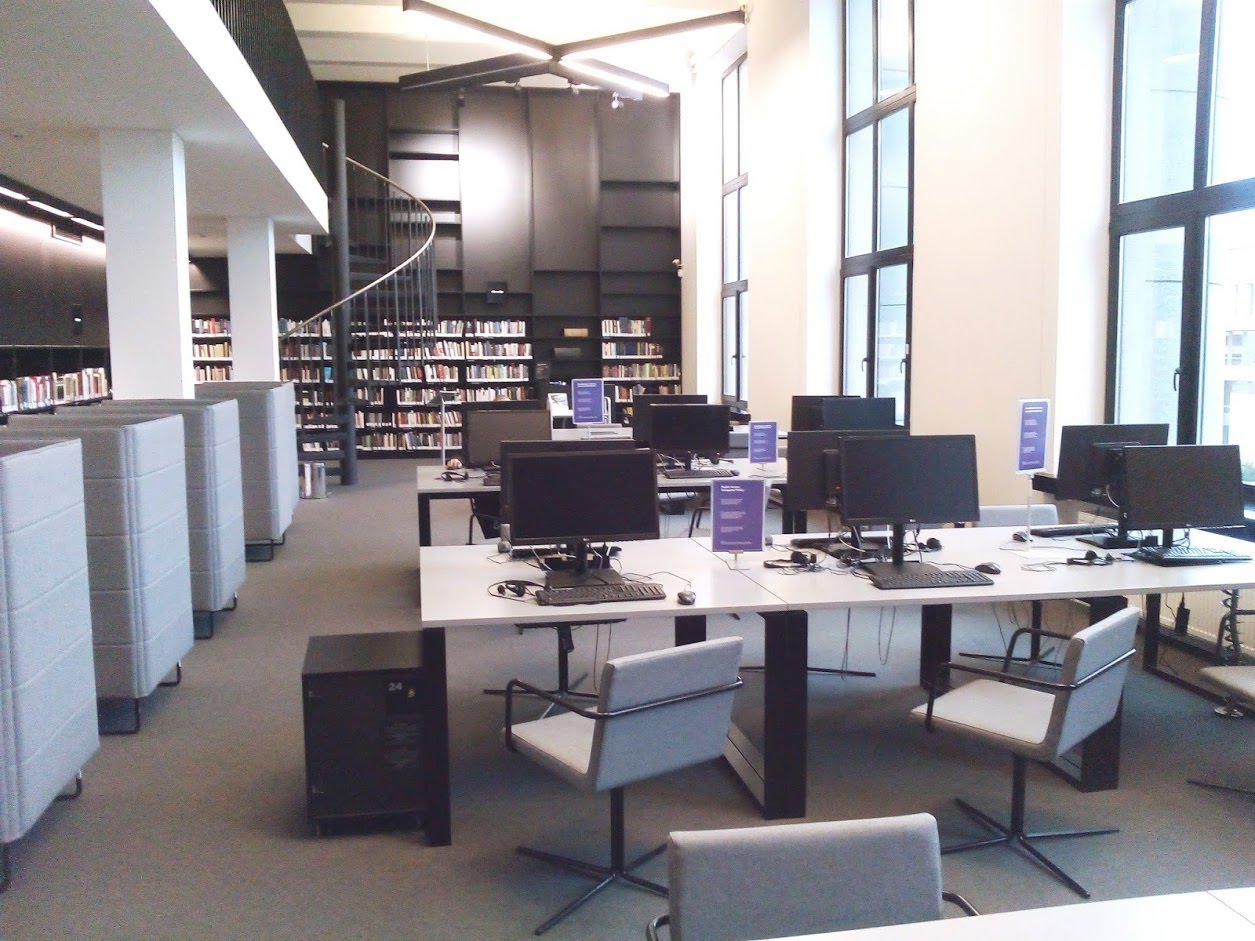Views: 744
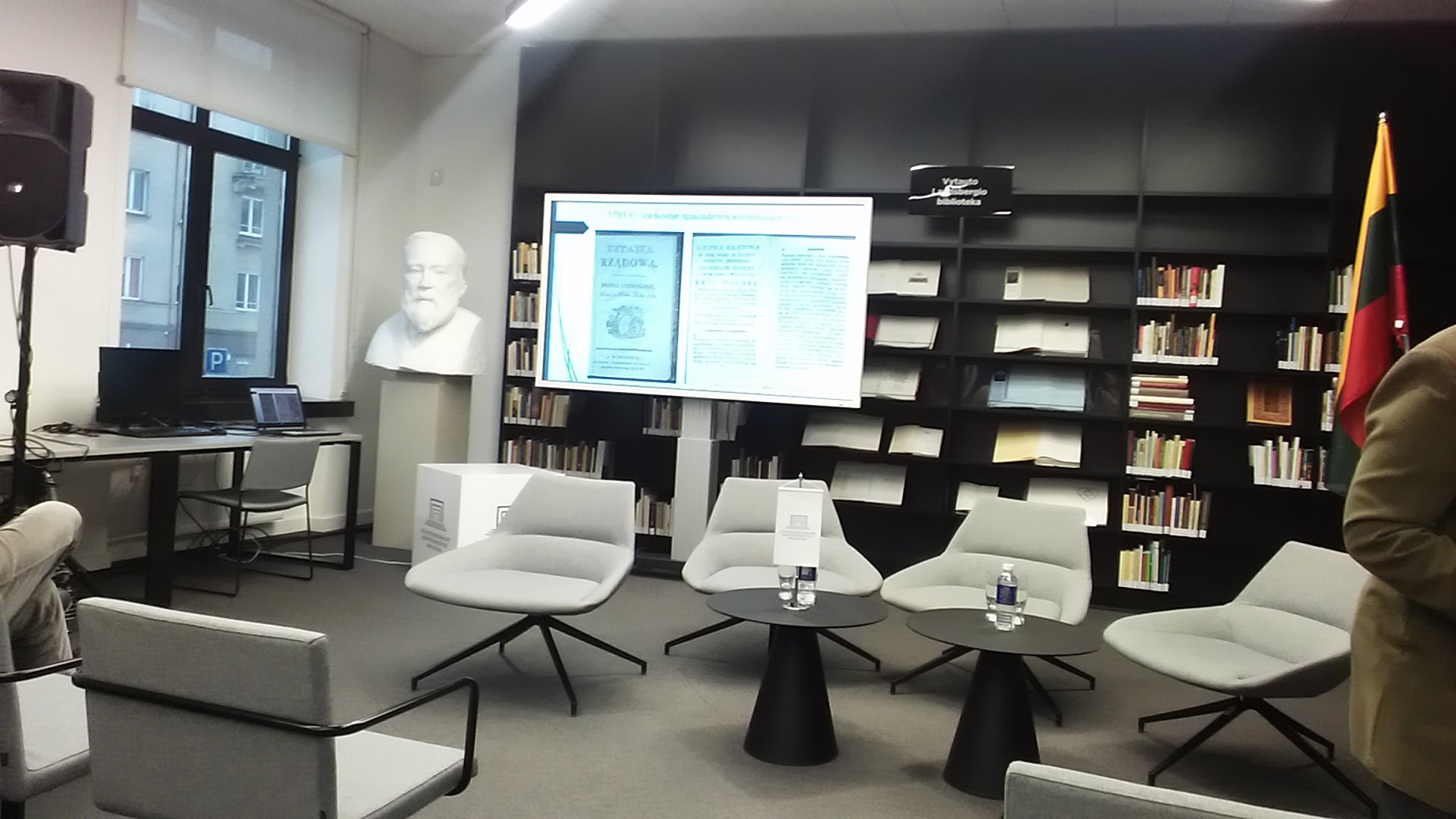 One of the meeting rooms in the library for public lectures, book presentations and discussions
One of the meeting rooms in the library for public lectures, book presentations and discussions
All photos are copyrighted by Vladislav B. Sotirovic
© Vladislav B. Sotirovic 2020
RELATED POSTS
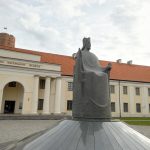
Originally, the Vilnius Lower Castle's jurisdictional court and administration was housed in this building during the 17th and 18th centuries. In the 18th century it was reconstructed into a weapons store-house and militarry baracks. Today, the museum holds the most important archaeological, historical, and ethnic cultural collections of Lithuania that cover Lithuania's history from the Stone Age to the present-day. In front of the building is a monument to King Mindaugas In 2003, a monument to King Mindaugas was erected in the square in front of the building of New Arsenal (today Lithuanian National Museum)In the 19th century, an entrance in the Classical style was biultAll photos are copyrighted by Vladislav B. Sotirovic© Vladislav B. Sotirovic 2018
Continue Reading
One of Baroque gates of the Sapieha ParkAmong the surviving details of the palace are Baroque façades with stucco relief works by Pietro Perti and three Baroque gates. The park is the only one in Vilnius Vilnius with features of a regular Baroque park The palace and the gates were decorated with sculptures and frescoes created by masters who had worked in the Church of St. Peter and St. Paul and St. Casimir's Chapel of the Cathedral Basilica in VilniusAll photos are copyrighted by Vladislav B. Sotirovic© Vladislav B. Sotirovic 2019
Continue Reading
One of the Latin inscriptions: "This house is that of Urania: be gone profane worries! Here the humble Earth is scorned: from here one rises to the stars"Here it was a Jesuit pharmacy. Medical herbs were grown in the courtyardThe buildings of the Observatory Courtyard are the oldest in the university ensembleAll photos are copyrighted by Vladislav B. Sotirovic© Vladislav B. Sotirovic 2018
Continue Reading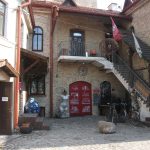
Užupio street is the main street in the city's district of Užupis. The district was in the Soviet time one of the most dilapidated districts in Vilnius. Many of the buildings did not have electricity and sanitary facilities, and the streets were unlitThe River Užupis which separates Užupis district from the Old Town. On one side of the river is a unique ensemble of sacred buildings and a park, while on the other side is "Republic of Užupis", where a number of artists live and work"Angel of Užupis" sculpture. An angel is playing a trumpet that provides ideas about Užupis to others and protects the district. The 24th Article of the Constitution of Užupis, for instance, says that "Everyone has the right to understand nothing". The district is separated from the Old Town by the River Vilnia on three sides, and by a high hill on the fourth sideAll photos ...
Continue Reading
Christmas Tree decoration at the Cathedral Basilica Square in Vilnius. The belfry is seen in the backgroundChristmas decoration in front of the principal building of the castle complex in Vilnius Old Town - Cathedral BasilicaCathedral Basilica of Vilnius is erected on the place of the pagan altar with a ceasred fire to the pagan god Perkūnas (god of Thunder)All photos are copyrighted by Vladislav B. Sotirovic© Vladislav B. Sotirovic 2019
Continue Reading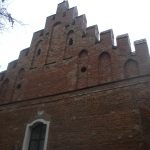
The church was named after St. Nicholas, who was the Bishop of Myra and the patron of travelers and merchants. The character of Santa Claus is thought to be based on this saintThe Church of St. Nicholas in Vilnius is the oldest surviving Late Gothic church in Lithuania. The small church was used by the Franciscan monks, who lived nearbyThe interior of the church is decorated with ornate rib and groin vaults. A 16th-century picture of St. Nicholas with a silver frame is located on the left altarAll photos are copyrighted by Vladislav B. Sotirovic© Vladislav B. Sotirovic 2018
Continue Reading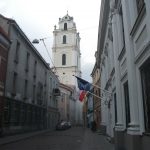
In this street, it was used to be a market place where it meets Pilies street. The first Town Hall is also believed to have stood on this spot Pharmacy house in St. John St. No. 5. Georg Schulz's pharmacy operated in this house since 1639. During the war in 1655, the house was burned down. In 1781, pharmacist Koszyk acquired the ruined building and reconstructed it The Pac estate. Since 1628, the building belonged to the Pac magnate family of the Grand Duchy of Lithuania. In 1783, the dilapidated building was bought, renovated and decorated by the Chancellor of the Grand Duchy of Lithuania - Alexander Michael Sapieha. Currently, the building belongs to the Polish Embassy All photos are copyrighted by Vladislav B. Sotirovic© Vladislav B. Sotirovic 2020
Continue Reading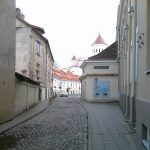
The Grand Duke of Lithuania Sigismund (1432-1440), who ruled briefly after the death of his brother Vytautas the Great (died in 1430), granted equal rights to the Russian Orthodox believers living in the capital-city of Vilnius - before long they came to constitute one half of the members of the city board and guild elders In the Middle Ages Vilnius (today Old Town) was increasingly multy-national as it was the case with the Grand Duchy of Lithuania as well. The city was, in fact, divided into four quarters according to the ethnic and religious belonging of its citizens: the German Quarter, the Russian Quarter, the Jewish Quarter, and the Tartar Quarter. Each of these city quarters had the main street named according to the ethnic belonging of their inhabitantsThe Russian Street in Old Town of Vilnius ends with the Russian Orthodox Cathedral (Sobor) of the Dormition of the Holy Mother ...
Continue Reading
The interior sculptural décor was created by Pietro Perti (Italian master) in 1700-1705. Twin towers were built on in the 18th century. It was built by the efforts of Casimir Sapieha the Younger (1637-1720) in 1694-1717 On the façade frieze two Christian soldiers taken into captivity by the Muslims are represented. The main goal of the Trinitarian Order was returning such captives to their homelands The church has an impressive cupola (dome), the interior is adorned with stucco relief works and sculptures - a large part of them is survived. The church is a "sister" to the Church of St. Peter and St Paul in Vilnius (Antakalnis)All photos are copyrighted by Vladislav B. Sotirovic© Vladislav B. Sotirovic 2019
Continue Reading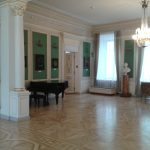
The family of the noblemen Chodkiewicz bought a house that stood on this site, and transformed it into a Renaissance residenceGrand Hall of the Vilnius Picture Gallery in former Chodkiewicz PalaceThe Classicist interior of the palace is a notable feature of the building of former Chodkiewicz Palace, today the Vilnius Picture GalleryAll photos are copyrighted by Vladislav B. Sotirovic© Vladislav B. Sotirovic 2020
Continue Reading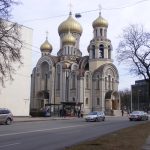
It is one of the most attractive Russian Orthodox churches in Vilnius: the exterior is a profusion of shining onion-shape domes; but the interior is remarkably serene. The interior's simplicity is interupted only by an elaborate iconostasis The internal space is created by two huge pairs of parallel semi-circular arches, intersecting at the top under the central dome which is also the main source of lightA panel on the right of the iconostatis depicts the two saints, both from noble families in the Middle Ages, to whom the church is dedicatedAll photos are copyrighted by Vladislav B. Sotirovic© Vladislav B. Sotirovic 2020
Continue Reading
The organ, made by famous German master Adam G. Casparini in 1776, is one of the most valuable cultural monuments of Lithuania. The organ itself is the only surviving original 18th-century instrument in LithuaniaThe church has many Baroque frescoes. In the cupola, there is a multi-figural composition "Apotheosis of the Holy Spirit" (neo-Baroque, 19th century)The altars and the pulpit are lavishly decorated with round and relief sculptures and ornamentation All photos are copyrighted by Vladislav B. Sotirovic© Vladislav B. Sotirovic 2018
Continue Reading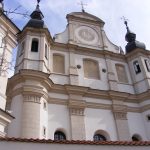
The church was financed by Grand Chancellor of the Grand Duchy of Lithuania, Grand Hetman, and Vilnius Voivode - Lew Sapieha, who had converted to Roman Catholicism from Calvinism. He was one of the most influential nobles in the Grand Duchy of LithuaniaLew Sapieha gave the church and surrounding buildings for the Bernardine nuns to have a convent and built a Sapieha family mausoleum in the churchThe convent was also a place where the daughters of rich aristocrats were taught. Today, the Church Heritage Museum operates in the churchAll photos are copyrighted by Vladislav B. Sotirovic© Vladislav B. Sotirovic 2019
Continue Reading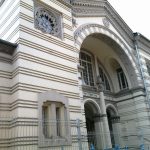
Choral Synagogue is the place of the only working synagogue and school "Tarahat Hakodesh" in Vilnius This synagogue is built in the Oriental Moorish style and is only survived one out of some 105 before WWII synagogues and other Judaic prayer housesThe exterior contains an inscription in Hebrew "A prayer house is sacred for all nations", and above the pediment the tablets with the Ten Divine Commandments are representedAll photos are copyrighted by Vladislav B. Sotirovic© Vladislav B. Sotirovic 2020
Continue Reading
The Church of the Assumption is one of the Vilnius' most beautiful Baroque churches and most mature building of the Vilnius' Baroque schoolConstruction on the church began in 1695 and the final work was carried out by Vilnius' Baroque architect Johann Christoph Glaubitz (1700-1767) in 1750-1756The front façade is adorned by a domical rotunda vestibule, and two elegant towers with clocks All photos are copyrighted by Vladislav B. Sotirovic© Vladislav B. Sotirovic 2019
Continue Reading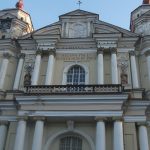
The founder of the church was a Grand Hetman and Vilnius Voivode of the Grand Duchy of Lithuania. The 17th-century church's façade is modest, however the interior is richly ornate with a number of stucco mouldings The church was built to mark the liberation of Vilnius from Moscow (The 1655-1661 War) and the founder's own escape from the hands of rebellious soldiers. The interior was created by the Italians G. P. Perti and G. M. Galli, who decorated it with more than 2,000 stucco mouldings The chandelier was created in 1905 in Riga and represents the Biblical Noah's arkAll photos are copyrighted by Vladislav B. Sotirovic© Vladislav B. Sotirovic 2018
Continue Reading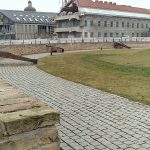
The architect of the Vilnius Bastion is unknown. The building that rose in the early 17th century is attributed to the period of late Renaissance and in that period Vilnius did not have a municipal architectThe wars of the mid-17th century and the 18th century weakened the military power of the Grand Duchy of Lithuania. The army led by the Russian Emperor Aleksey Mikhailovich approached Vilnius in August 1655 and seized the cityWhen Vilnius was liberated in 1660, the city's defensive fortifications needed repair. However, there was not enough funds and the citizens were unable to maintain defensive fortifications, supply them with arms and gunpowder and provide securityAll photos are copyrighted by Vladislav B. Sotirovic© Vladislav B. Sotirovic 2020
Continue Reading
Three crosses are believed to have first been erected on this hill above the Old Town of Vilnius in the 17th century to commemorate a group of 14 Franciscan monks from a nearby monastery who were martyred in the 14th century The monument has changed several times. The present one was built in 1989 to replace one that had been removed by the Soviet authorities in the 1950sOne of the best panoramic views of the Old Town of Vilnius is offered from the Hill of Three CrossesAll photos are copyrighted by Vladislav B. Sotirovic© Vladislav B. Sotirovic 2020
Continue Reading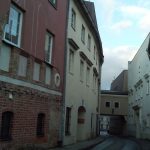
A former Gothic façade that was uncovered at Karmelitų Str. around Rūdninkų Square in the Old Town of VilniusThe back-side façade from the inner courtyardThe back-side façade from the inner courtyard. The house is located on the territory of WWII Large Jewish GhettoAll photos are copyrighted by Vladislav B. Sotirovic© Vladislav B. Sotirovic 2020
Continue Reading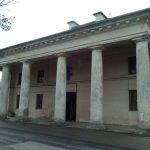
In 1780, Vilnius Bishop Ignacy Massalski settled in Verkiai. He commissioned Lithuanian architect Laurynas Gucevičius to reconstruct an earlier palace. The general plan and maintenance buildings were designed by Lithuanian architect Martin KnackfussThe ensemble encompasses the park of 36 ha. Situated on two terraces, the park consisted of two parts - the upper and the great park. A view of Vilnius and the Neris River is exposed from a steep slopeSince 1960 the ensemble belongs to the Lithuanian Academy of Science and is gradually renovatedAll photos are copyrighted by Vladislav B. Sotirovic© Vladislav B. Sotirovic 2021
Continue ReadingLithuanian National Museum (New Arsenal) and a Monument to King Mindaugas
Sapieha Estate and Park
The Observatory Courtyard of the Vilnius University
“Republic of Užupis”
Vilnius Christmas Tree
Church of St. Nicholas
St. John Steet in Vilnius
The Russian Street in Vilnius
Church of Our Lord Jesus and the Trinitarian Monastery
The Vilnius Picture Gallery (Chodkiewicz Palace)
The Russian Orthodox Church of St. Michael and St. Constantine
Dominican Church of the Holy Spirit (Interior)
Church of St. Michael the Archangel
Choral Synagogue in Vilnius
Church of the Assumption
Church of St. Peter and St. Paul in Vilnius
The Bastion of the Vilnius Defensive Wall (II)
The Hill of Three Crosses
House-Monument with Gothic Façade
The Ensemble of the Verkiai Estate




